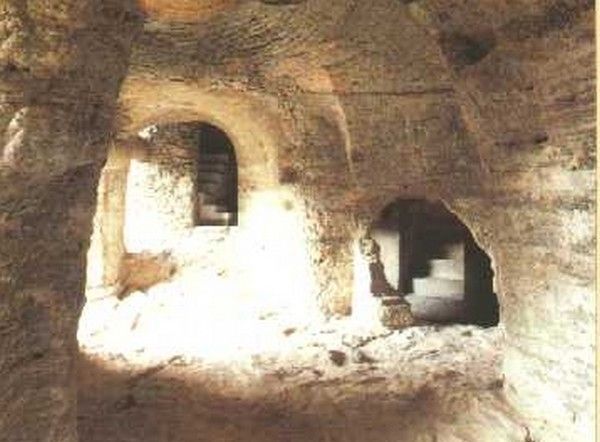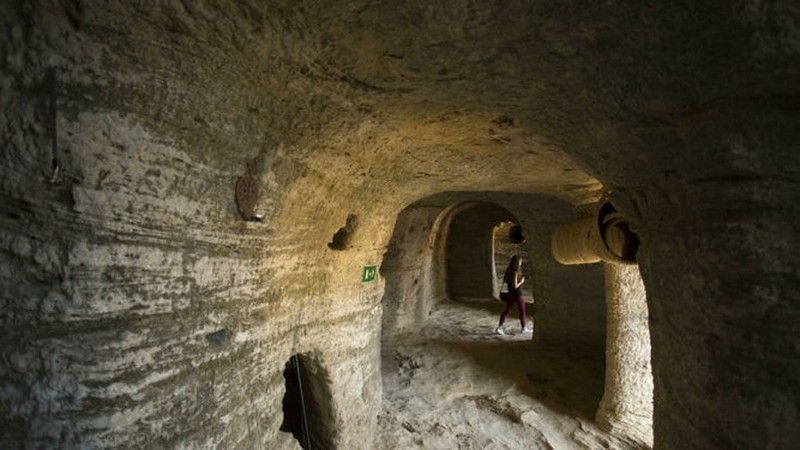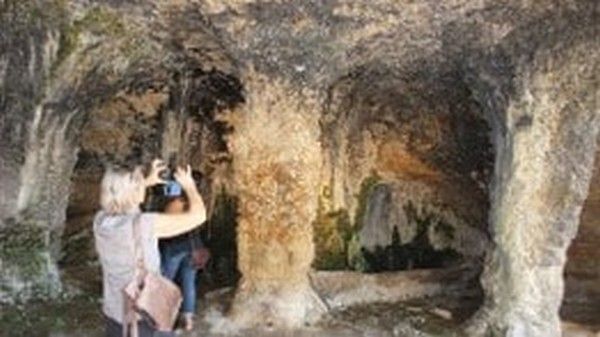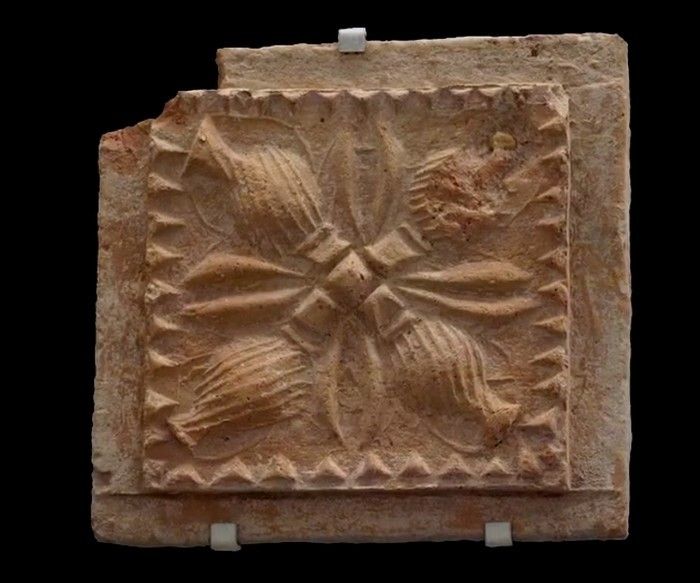SANTA MARIA DE LA CABEZA

Historic environment
Located on the outskirts of the city of Ronda on a slope of its famous Tajo, this cave hermitage continues to be used for religious purposes by the Brotherhood that bears her name of Virgen de la Cabeza since modern times. In fact, attached to the early medieval temple, we find a Baroque chapel from the 18th century. The town of Ronda continues to celebrate a pilgrimage in the name of this ancestral virgin.
This church is part of the group of churches with three main naves, the example of Coín being the closest functionally and stylistically. Its integration into the suburban churches is due to its proximity to the city of Ronda, over which it enjoys beautiful perspectives. It is logical to think that in this set, whose chronology can be placed between the 7th and 9th centuries, there was a small monastic community dedicated to agricultural work around a small monastery (dayr) with a main church.
Description
The set is made up of a set of open naves in the rock, reusing some natural cave. Its complexity is enormous, since the work on the stone has not been carried out by going deeper into the rock, but rather it is structured radially with a theoretical center in the most prominent access. The result is an “organic whole that works with a remarkable plurality of connections and, therefore, of connection possibilities. That is, from any warehouse you can reach the others without having to go outside” (Puertas Tricas). Its originality and monumentality are, of course, guaranteed.
Two sectors can be clearly distinguished: one for worship and the other for residential or residential purposes. In total there are 272 m2 of which 55% is allocated to the church and the rest to cells and homes.
 The part destined for the temple is made up of three naves, of which the main one (with 41% of the total area) has a longitudinal axis whose orientation is S.SO to W .NO. Its apse is semicircular, unfinished, while on the outside it offers a semicircular triumphal arch. From this nave, two others depart, whose access to the main one has been partially blocked in modern times: one, with a longitudinal axis in the S-S.SE-N.N.NO direction, which can be identified with a sacristy of relatively large dimensions, and the second with an axis running from N-N.NE to S-S.SO. The first and third, present their corresponding independent altars on their S.-SO and N-N-NE fronts, which implies that different liturgies could be celebrated in each of those spaces. From the foot of the one described in the third place, there is a staircase that descends to a small crypt that is located below said altar. Due to its dimensions, there is no possibility that there was any burial in that crypt, so a chamber for relics must be considered. It is not ruled out, however, that it had been carved in much more recent dates.
The part destined for the temple is made up of three naves, of which the main one (with 41% of the total area) has a longitudinal axis whose orientation is S.SO to W .NO. Its apse is semicircular, unfinished, while on the outside it offers a semicircular triumphal arch. From this nave, two others depart, whose access to the main one has been partially blocked in modern times: one, with a longitudinal axis in the S-S.SE-N.N.NO direction, which can be identified with a sacristy of relatively large dimensions, and the second with an axis running from N-N.NE to S-S.SO. The first and third, present their corresponding independent altars on their S.-SO and N-N-NE fronts, which implies that different liturgies could be celebrated in each of those spaces. From the foot of the one described in the third place, there is a staircase that descends to a small crypt that is located below said altar. Due to its dimensions, there is no possibility that there was any burial in that crypt, so a chamber for relics must be considered. It is not ruled out, however, that it had been carved in much more recent dates.
The rest of the surface is dedicated to residential areas with two sectors: the northern one, with an elongated planimetry, with four rooms as individual cells, and the southern one, which must correspond to a house. Outside the area of worship there is a large silo for storing food and a space that has had various uses, including shelter for livestock.
Virgilio Martínez for URBS REGIA
Other interesting information
The monument has very specific opening hours, approximately every 15 days and only during the weekends. To find out exactly which weekends it will be open, visitors should contact the Ronda tourist office, Tel. 952 18 71 19.
Free entrance.
Bibliography
R. Puertas Tricas, 1985: “Dos iglesias rupestres mozárabes en Ronda”, Cuadernos de la Alhambra… .
R. Puertas Tricas, 1988: Exploraciones en iglesias rupestres de Ronda, Caja de Ahorros de Ronda, Ronda, 1988.
R. Puertas Tricas, 2006: Iglesias rupestres de Málaga, CEDMA, Málaga, 107-132.
Portals















